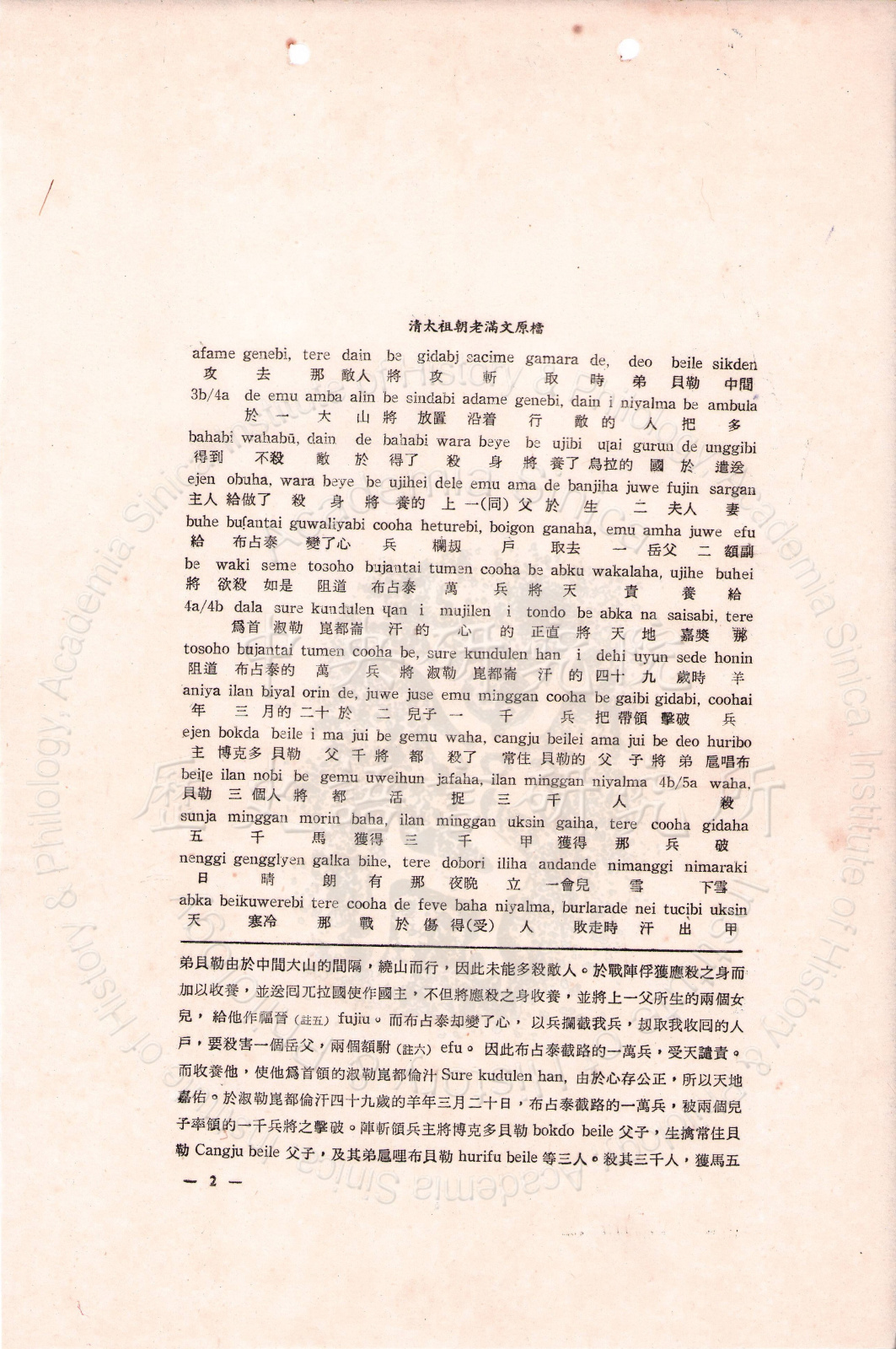In 1970, the IHP published the first volume of Qing taizu chao laomanwen yuandang (The Original Manchu Archive in Old Manchu Script from the Court of the Qing Grand Founder), translated and compiled by Konggoro Guanglu (?–?) and Hsüeh-chih Li (1919–2003). This was the first monograph devoted to the translation and verification of old Manchu script, which had been used prior to the Manchu conquest of the Ming Empire and is without dots, circles or similar diacritic marks. The composition of the text is divided into two sections: The upper section (15 lines on each page)contains the Romanized Manchu script in parallel with punctuation annotations and Chinese characters; the lower section(8–9 lines on each page and demarcated from the upper section with a black line) is the translation into Chinese. The above features of the composition added to the difficulty of typesetting and layout. The documents now preserved by the Archives contain the typesetting principles set by Li, which mention that to accommodate the old Manchu script, the layout of the Chinese translations had to be adjusted accordingly. Moreover, in his preface, Guanglu notes that thecomposition posed major challenges for the printing house, as the typesetter was not well versed in Manchu. Within the archival documents, one can also find samples of misprints, further evidence of the difficulties noted by Guanglu. When taken together, they reflect the efforts of scholars and how they overcame the difficulties of translating and publishing materials from and/or in minority languages.



